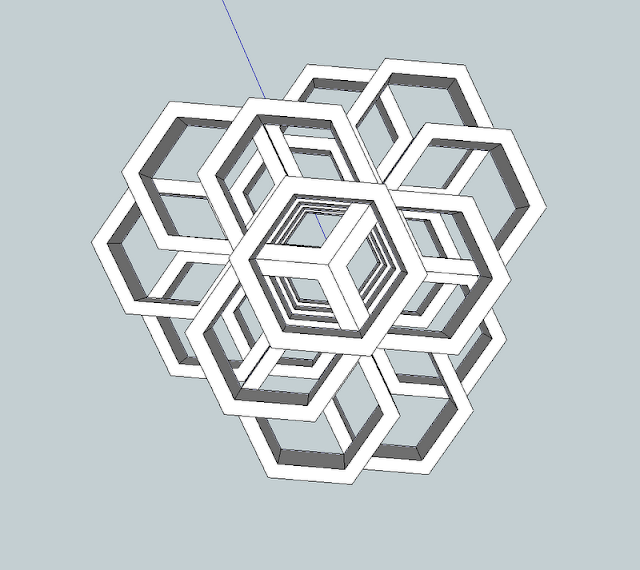Since in the first branch of my tree of models I'm developing a path of models revolving around the idea of creating an impossible shape in 2-D and then making it a reality in 3-D, in the next branch of models I decided I would look at a flat, common shape and make it 3-D, but in a different way to how we normally expect them to.
First, I decided I would look at the humble hexagon, a shape that most of us are intimately familiar with through their notorious use in beehives and futuristic architecture.
I decided to give the shape of the hexagon more fluidity to it by aligning the shapes not horizontally, but vertically into a more sinuous fluid curve.
So I fist looked at how that could be arranged, and then I designed each layer separately, resulting in a total of 7 layers comprising of 19 hexagons, all of which would be stacked in a particular way. The whole idea behind this project is the creation of a (relatively) simple shape which is then used to create something many times more complex, but which still relies on simple geometry to be effective.
Here you get the gist of what I was trying to make. Not having Solidworks at home meant that I created this model in Sketchup, which works well enough. As long as the models are ultimately made of extruded forms, the files transfer to 3dsMax okay.
Here you get the idea of me trying to create much more complicated forms out of very simple shapes. Despite only using hexagons for this model, the shape that I came up with possessed far more form and flow than what exists in the simple 6-sided shape.
After completing the model, I took it into 3dsMax and successfully made it into something much prettier. I call it the Hexa-Core. It is one of those forms which revolves around this idea of something being contained on the inside. I placed lights inside the model to also convey this effect.
Once again, I played around with some simpler changes in 3dsMax, resulting in a slightly less geometric form, but one that still conveyed what I wanted to communicate.
Currently one of the branches in my model tree is taken up by self-contained loops (The Quadra-Knot and the Penta-Knot, while the second branch is taken up by more self-iterative work, like this one.






No comments:
Post a Comment